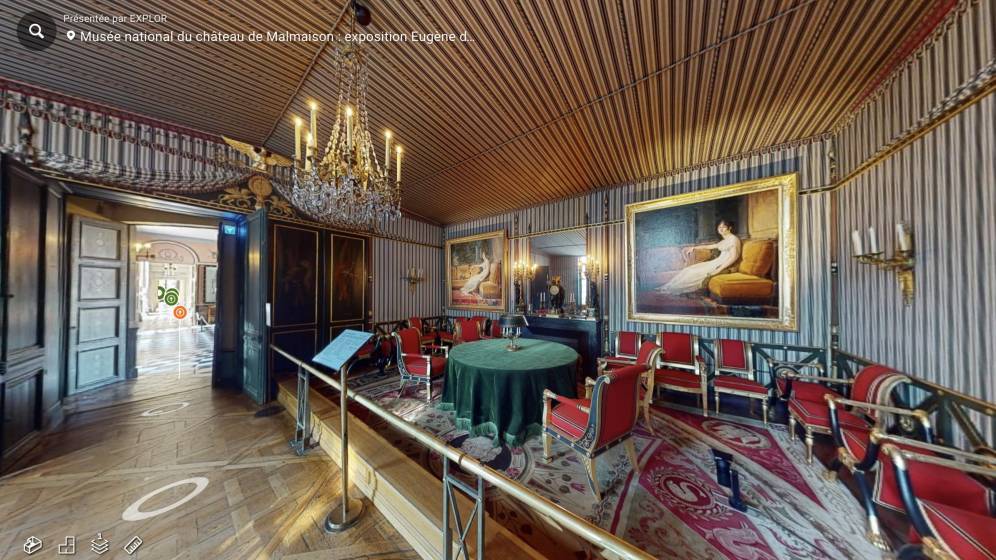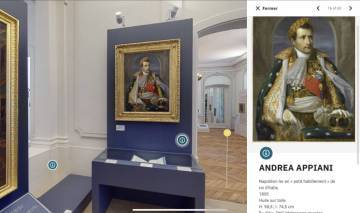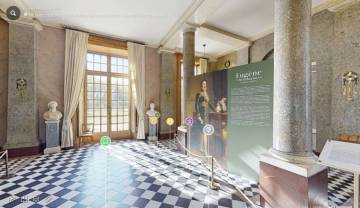Contemplate The lady with the unicorn, strolling in the birthplace of Georges Clémenceau... All this will soon be possible thanks to the experiment conducted by the Ministry of Culture. Five national museums have volunteered to enhance their collections or exhibitions through virtual: museums Clemenceau-de Lattre (Vendée) and Magnin (Dijon) but also the museums of Cluny, Port-Royal des Champs and castles of Malmaison and de Bois-Préau in Paris or around Paris.
This experiment, launched a year ago, aims to develop new practices that emerged during the health crisis, such as online visits to French cultural and heritage institutions. This digital development echoes with some of the main axes of the law on museums of France born just twenty years ago: the reception of audiences, the promotion of mediation activities and the promotion of museum collections throughout the country and internationally.
Support new online visit practices
So far rather developed by larger institutions such as the Meeting of the National Museums-Grand Palais or Universcience (Cité des Sciences et de l'Industrie) , online visits can now be made to national museums or museums in France with budgets and sometimes very limited human resources. For them, the ministry has devised low-cost solutions – less than €4,000 – to exhibit entire collections online and highlight a selection of masterpieces or a temporary exhibition.
Technical solutions have been available for several years now, with technical quality constantly improving and a lower budget. « The objective is to see how this experiment can amplify the reach of museums and enable them to find different audiences », explains Anne Dubile, Deputy Head of the National Museums Steering Office, in charge of foresight at the French Museum Service of the Ministry of Culture. Indeed, the increase in digital cultural practices is one of the trends observed over the past ten years among French people, especially those aged 15-24. Finally, for some of these museums, it is an opportunity to reach a French or even international audience who may not know them.
3D tours, free and autonomous
In the near future, the five establishments will offer 3D tours, free and independent, that is to say without a mediator commenting on the visit. They will be accessible on phone, tablet or computer and to stick to an international outreach goal, the cartels will be translated into English or German depending on the institution. The visitor thus finds himself in total immersion, with the possibility to zoom in on works and to access information-rich digital cartels.
This device also serves professionals who can contemplate the scenography of exhibitions from a distance and lending institutions who see how their works are showcased in temporary exhibitions. A link is also provided to the museums' online shop and to a questionnaire for feedback that will then be treated to assess the impact of this experiment and imagine new uses if necessary.
After a first phase, that of putting the exhibitions online, a second part is planned to go even further. These autonomous online visits can be completed by guided tours live online thanks to a mediator who will appear in video on the screen.
A guide on online visits to cultural institutions
Like these five national museums, with the health crisis, many institutions have set up online visits in order to keep in touch with the public or to attract new visitors. These new practices persist beyond the context of the pandemic and are now a lever to develop and diversify audiences and enrich the means of physical and online mediation.
To best support these cultural institutions, the Ministry of Culture now offers a set of documents to help places that want to design or optimize online visits to their permanent collections, their temporary exhibitions or heritage spaces. These documents present different visit formats, the evaluation of their impacts and their prospects for evolution and highlight the best practices to adopt. All this is illustrated by examples and feedback from cultural institutions.
This set of documents consists of a guide, a set of fact sheets and a summary for all the businesses concerned by the implementation of online visits, in particular public officials, of the institutions.
Documents can be downloaded here.
Partager la page


